Scuba Diving in Playa del Carmen: Becoming a Divemaster in the Mexican Caribbean
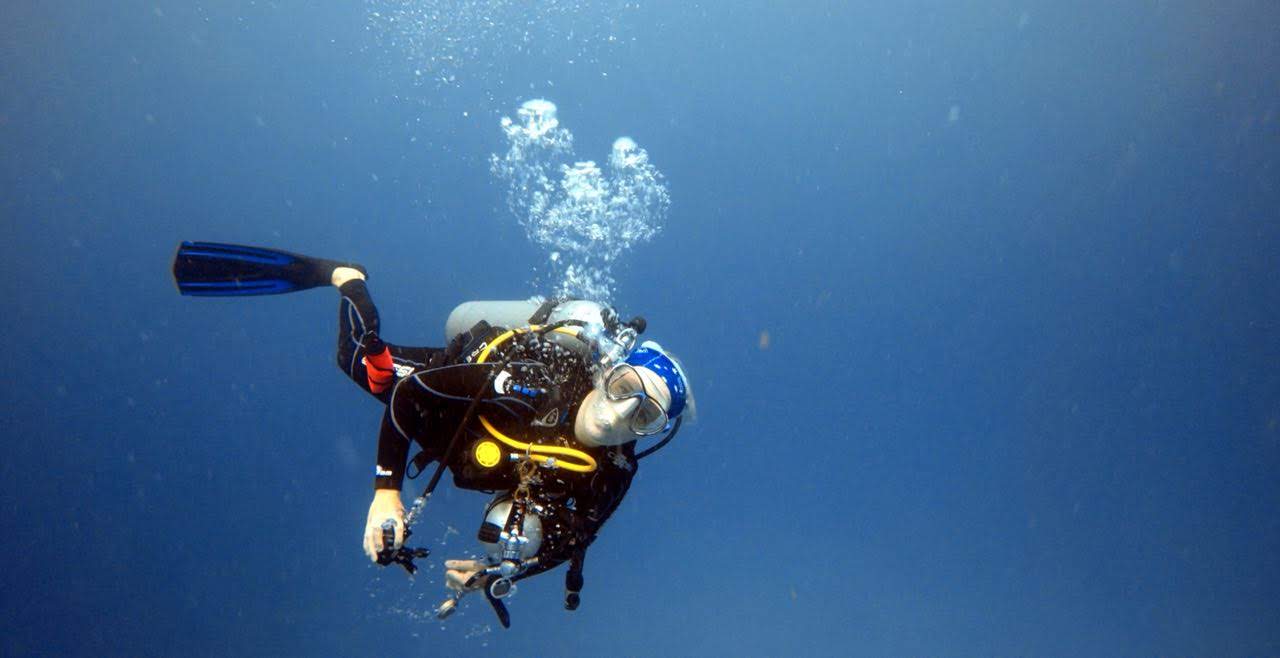
I arrived in the Caribbean coast of Mexico three months ago, excited to go scuba diving in Playa del Carmen. My plan was to settle in to a comfy Airbnb apartment for five weeks and study a rescue and Divemaster course, finish up and move on to San Andres, my next diving destination in the north of Colombia.
Needless to say, I’m still here, and I don’t think I’m leaving anytime soon.
Let me explain the turn of events that got me to where I am now.
Rescue Diver Course
As I explain in my previous article, I arrived just before a bout of horrible weather, thanks to one of many tropical cyclones that frequent the Caribbean. My four day First Aid and Rescue Diver course was stretched to over a week, which was an advantage, because it is exhausting!
Day three was when the action started: I went to the pool with my instructor, Paco, who would come to be a great source of information and lessons in my rescue and divemaster courses. Paco is from Puebla, another state of Mexico, and was originally a software engineer who wanted a lifestyle change to be near the ocean. So a year ago, he packed up and moved to the Riviera Maya, began diving, did a Divemaster course and didn’t stop until he was an instructor.
Paco taught me the skills I needed to know in the pool, with the assistance of two ‘victims’, Nikki, a Divemaster intern from France and Christina from Belgium, who would be my Divemaster classmate and soon a very good friend. When we learn the basics of diving, we know how to handle emergency situations to rescue ourselves, but we don’t touch on how to help out others. I learnt how to calm a panicked diver, tow a tired diver and rescue an unconscious diver, both below the water and on the surface. You don’t realise how dangerous a panicked diver can be until your ‘victims’or even your instructor try to drown you by ripping of your mask, taking out your regulator and climbing on you until you almost drown. Not to mention turning off my air underwater! Christine was silently saying sorry to me as she did it (so she says), so I forgive her – I imagine it must feel so evil to turn off someone’s life support underwater at 15 metres. The Rescue Diver course is intense and exhausting, but a lot of fun! I became a far more confident diver (and later I got my revenge as I played the ‘victim’ for other poor suckers!)
How a 5 week diving vacation turned into a 3 month internship
Only a week into my course, the flu that had developed into an infection returned with a vengeance, and diving multiple times a day was the final straw. I was returning home with a fever on 32 degree days, coughing and shivering. I went to the doctor for my dive medical approval and decided to be honest about my congestion, which led to a diagnosis of severe bronchitis that would develop into pneumonia if I did not cease diving immediately and receive nebulisation treatment on n oxygen machine twice a day for 3 days (which turned into almost a week).
Upon finishing the treatment and receiving approval for diving, we were hit with another several days of tropical stormy weather, delaying me even further. I realised that even if I tried to squeeze in all my required diving by my planned departure date, I would exhaust myself more and get sick again. So I headed down to the dive centre for a serious discussion with my mentor and instructor, Lucille, about my options. I told her that I was able to return to diving, but I needed to do things slower in order to stay healthy, and therefore I needed extra time.
“How much extra time are you thinking?” she asked me. I said a month.
“How about three months?” she asked me. She explained that Vicki, the current Divemaster intern, was finishing up that week, and therefore there was a space for a three month internship where one works four hours in the office in exchange for the Divemaster course. I would gain more experience over three months, I would dive half a day and work in the dive centre half a day. I mentioned that I used to be a marketing executive and also an office manager in my former life, and that is when the Operations Manager shook my hand and welcomed me to the team. I could also take Vicki’s room in a cheaper neighbourhood further from the town centre in an apartment with Paco. His friend had a bike to loan me to get me to and from work every day. It all seemed so perfect, all the pieces fit together, it was an opportunity I couldn’t refuse. Who knew what kind of life it could bring me?
Divemaster: Taking the plunge from recreational to Pro
It wasn’t long after had I begun my internship that I noticed the difference between diving for fun and working as a professional.
- The hours are long. You arrive at 7.30am to help open the store, put out the street signage, hang up dry wetsuits, fill the rinse bays and prepare paperwork and equipment for the clients. You are still at the shop long after the client has left, washing their rental equipment, filling out your training logbook and receiving feedback from the instructors in a debriefing about the dive. Besides, it’s so hot here you don’t want to return home on your bike while the sun is still high in the sky. Whoever said it’s a cruisy job has never done it! I arrive home exhausted every night and practically fall dead asleep (or “caerme muerta in Spanish”) before my head hits the pillow.
- Speed is everything. When you are on the client side, dive operations seem so laid back and relaxed, but behind the scenes, it’s anything but. Once the client arrives, it’s a rush to get their paperwork signed, try on rental equipment and do a briefing of the upcoming dives before the shop reception advises that the boat is ready and waiting at the beach. You can’t delay getting your client into the boat, sitting them in front of a tank, assembling their equipment and rushing to the front of the boat to fight with other instructors and Divemasters for weights. Once the boat arrives at the reef, the crew are quietly gesturing at you to get your client geared up and in the water as quickly as possible (after all, they want to go home early, it’s bloody hot!). Once surfacing, you have a moment to change tanks, pass around fruit and water to your clients, chat with them about the dive and brief them on the next site before it’s time to get in the water again. The most important thing that I am learning out of all this is that we may feel rushed inside and know our time deadlines, but we have to be cool, calm and collected on the surface for the client.
- Dive centres are as political as any office. There are reception staff, diving instructors, office manager, operational staff, boat crew and clients. Everyone has different priorities: saving time and money, offering good customer service, gaining more clients, ensuring smooth and safe operation and getting all the paperwork in order, not to mention the corporate priorities of the larger head company the owns the operation. These priorities often collide, but the most important thing, just like with speed, is that the client doesn’t notice it.
- There’s something to learn from every instructor, and not every one is good. People come from all walks of life to learn and teach scuba diving in Playa del Carmen. I have a French mentor, who’s instructor boyfriend is from Mexico City. I have also dived with instructors from Italy, Argentina and Spain. Each instructor has learnt their techniques and has their own style of teaching. I am too early in my diving career to say one or the other is wrong, but I am getting to know what I personally would like or not like if I were one of their clients.
- The dive centre you choose is imperative: My best dive buddy in Australia warned me to check reviews before coming, and I’m glad I did. Upong arriving, I’ve heard horror stories about dive centres taking advantage of Divemaster as slave drivers: working in the shop 12 hours a day, doing nothing but selling courses, carrying tanks and washing gear for 6 months before earning the Divemaster certification. I am extremely spoiled at my dive centre not having to do that, and I receive the best instruction I have ever received in diving. If you are thinking of trying scuba diving in Mexico, the beat diving is in the Caribbean. Come to Playa del Carmen and you can’t go past Dune Mexico Blue Dream – they will look after you and show you the best that the Mexican Caribbean has to offer.
The big question: How is the diving?
Coming from cold waters of 15 degrees and 5 metres visibility in summer, a balmy 29 degree ocean and 20 metres visibility is exactly why the Riviera Maya has such an amazing reputation from incredible scuba diving in the Caribbean. The coral reef spans 300km from Cancun to Belize, making it the second biggest in the world after my own Great Barrier Reef. The currents make incredible drift dives, especially in the beautiful island of Cozumel where you simply stretch out your arms and fly, enjoying the feeling of weightlessness as you drop off a wall that spans down to 400 metres. The area also has two incredible shipwrecks to explore, boasting amazing wildlife and loads of corridors and passages to exlore at 30 metres deep.
Each day, I am blessed to see a variety of amazing sea creatures. Schools of fish dart away from hunting barracuda, nurse sharks ride the currents, enormous moray eels snap at the water from nooks and overhangs. Massive eagle rays spread their wings and fly over the reef, nurse sharks lazily sleep under large rocks and gigantic, graceful turtles soar above me to take a breath of air before dipping back down again.
To be able to wake up every morning and greet the world with a morning dive, watching the reef and its inhabitants awaken, is a dream that I have to pinch myself to realise is true. It’s a hard job, there’s no denying it, but I am lucky I have the skills and opportunity to do it.
Click on the photos below to enlarge.
And now…where to next?
Life is unpredictable, never again will I plan something too far into the future because we never know where we will end up. Two years ago, I formulated an itinerary to travel to South America, heading from south up to the north, finishing in Mexico as a Divemaster. Later, I added Spain to my itinerary and therefore changed to direction of my travel. This has made Mexico my second destination, not my last, and it means I am making a sacrifice of the other countries. However the stars have aligned for again with another opportunity here: the Instructor Development Course begins in September, just as my internship finishes. I have been offered the chance to extend my internship and continue my professional diving journey. After that, I will cross the border to Belize, dive the Great Blue Hole, renew my visa and return to complete my internship.
Perhaps I’ll stay on here and become an instructor, forgoing my initial plan to become an English teacher. Perhaps after my internship finishes I will decide that my time in Playa del Carmen is over and I will to my next destination on my itinerary. Perhaps I will do neither and choose another destination. My curiosity to travel to those countries (and more) remains, but I can’t deny that this life is calling me…for now.
Hasta la proxima,
Alicia in Caribbean Wonderland

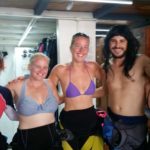
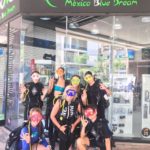
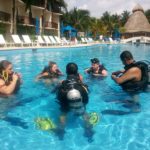
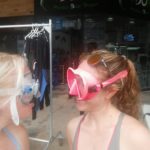
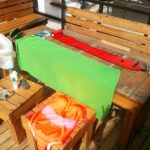
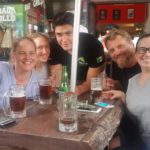
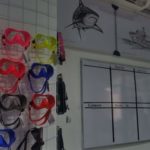
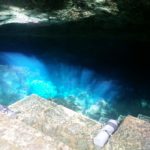
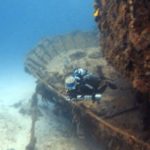
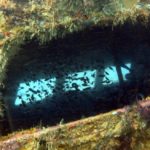
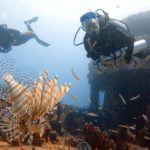
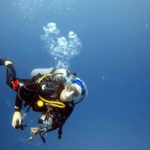
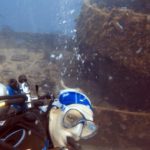
That is amazing Alicia. Best part is when live actually happens while making plans.
You are a big inspiration for me Krisha, I tell many people about your family’s adventures across the ocean! I hope you, Adrian and Alex are doing well and most of all, that you are happy. x